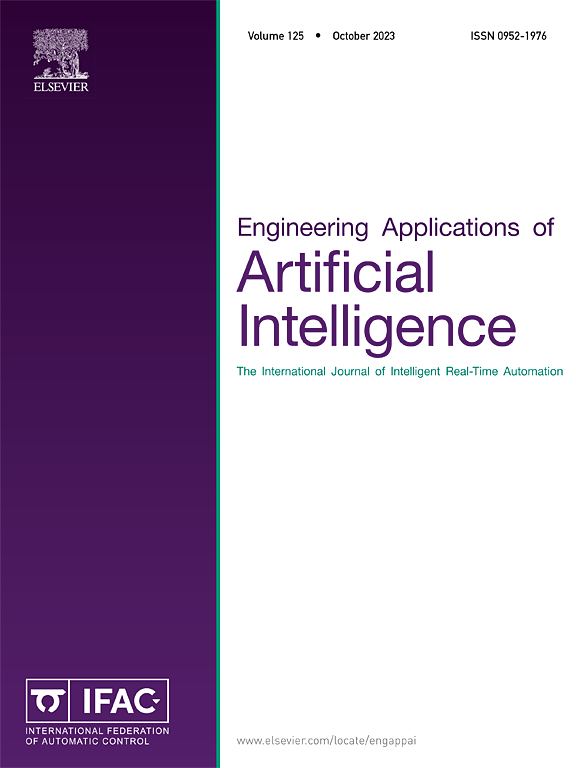Graph Neural Networks for multivariate time-series forecasting via learning hierarchical spatiotemporal dependencies
IF 7.5
2区 计算机科学
Q1 AUTOMATION & CONTROL SYSTEMS
Engineering Applications of Artificial Intelligence
Pub Date : 2025-02-25
DOI:10.1016/j.engappai.2025.110304
引用次数: 0
Abstract
Multivariate time-series forecasting is one of the essential tasks to draw insights from sequential data. Spatiotemporal Graph Neural Networks (STGNN) have attracted much attention in this field due to their capability to capture the underlying spatiotemporal dependencies. However, current STGNN solutions succumb to a higher degree of error in their predictions due to insufficient modelling of the dependencies and dynamics at different levels. In this paper, a Graph Neural Networks-based model is proposed for multivariate time-series forecasting via learning hierarchical spatiotemporal dependencies (HSDGNN). Specifically, variables are organised as nodes in a graph while each node serves as a subgraph consisting of the attributes of variables. Then two-level convolutions are designed on the hierarchical graph to model the spatial dependencies with different granularities. The changes in graph topologies are also encoded for strengthening dependency modelling across time and spatial dimensions. The proposed model is tested using real-world datasets from different domains, including transportation, electricity, and meteorology. The experimental results demonstrate that HSDGNN can outperform state-of-the-art baselines by up to 15.3% in terms of prediction accuracy, without compromising model scalability.
求助全文
约1分钟内获得全文
求助全文
来源期刊

Engineering Applications of Artificial Intelligence
工程技术-工程:电子与电气
CiteScore
9.60
自引率
10.00%
发文量
505
审稿时长
68 days
期刊介绍:
Artificial Intelligence (AI) is pivotal in driving the fourth industrial revolution, witnessing remarkable advancements across various machine learning methodologies. AI techniques have become indispensable tools for practicing engineers, enabling them to tackle previously insurmountable challenges. Engineering Applications of Artificial Intelligence serves as a global platform for the swift dissemination of research elucidating the practical application of AI methods across all engineering disciplines. Submitted papers are expected to present novel aspects of AI utilized in real-world engineering applications, validated using publicly available datasets to ensure the replicability of research outcomes. Join us in exploring the transformative potential of AI in engineering.
 求助内容:
求助内容: 应助结果提醒方式:
应助结果提醒方式:


